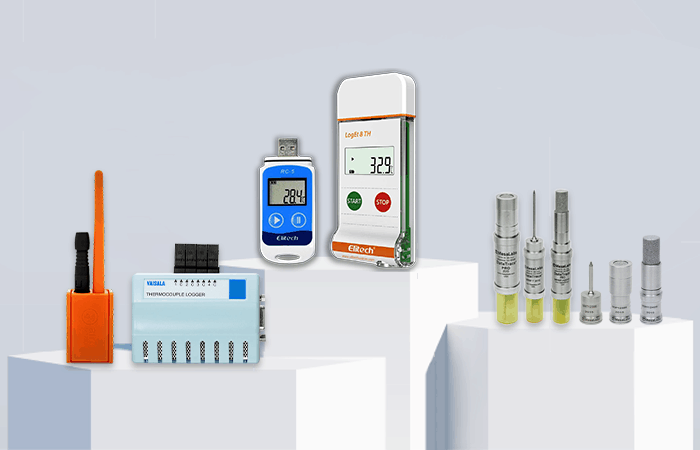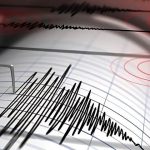As shown in multiple reports, the data logger market continues to grow. In this article, we will break down the various aspects of the market detailing such items as the types of products available, how they are used, where they are most popular, who the key players are in the humidity data logger market, and much more.
What Is A Data Logger?
Before we explore the data logger market, we should first understand what one does. A data logger is a measuring device. With the use of either internal sensors or external probes, a data logger can sample and record various types of environmental conditions. Data loggers are used for measuring temperature, humidity, air pressure, voltage, or current. Some models can monitor multiple conditions, with a temperature/humidity model among the most common models. Data loggers have an onboard microprocessor that serves as a memory so that measurements can be recorded for later retrieval. Depending on the specific model, data collected and stored can be downloaded to a desktop or laptop computer or sent directly to a tablet or smartphone for analysis. Data loggers assist with maintaining compliance in regulated industries and can be set up to send alerts when measured levels are near non-compliant zones. The alerts can be directed to key individuals to prompt human intervention. The design of a data logger is portable so that it can be used in any setting and use battery power. They are also designed to withstand harsh conditions that a human could not tolerate in environments where manual measuring would be impossible or dangerous to conduct.
The Data Logger Market – An Overview
A report posted in April 2021 estimated that the data logger market was expected to show a Compound Annual Growth Rate (CAGR) of 7.4% between 2019 and 2024. A few key factors were identified as having an impact on the overall growth of the data logger market. One was the significant demand found in regulated industries requiring accurate, dependable ways to measure and control environmental conditions. The evolution of data logger technology has also increased their use now that they have become more efficient and are built to last longer. The only negative that seems to have registered any impact on the growth rate within the market comes from the upfront cost of each device. This may be a factor in the slowness with which smaller companies have adopted the technology.
The Types of Products
Two main products dominate the global wireless humidity data logger market. They include the single-channel humidity logger, which records measurements from a single sensor or probe, and the multi-channel humidity logger. This product provides far more data because it can gather information from more than a single source. The key point to keep in mind is that a multi-channel logger with use more memory and battery power than will a single channel model.
Where Are They Used?
Four main industries use humidity data loggers, according to the Global Wireless Humidity Data Logger Market Overview. These are: the food processing industry, pharmaceutical industry, chemical industry, and in research and development applications. Each of these industries has strict guidelines related to product conditions. Data loggers provide the means to safely monitor and track those conditions. They also are effective in providing proof of compliance and alerting ancillary systems triggered by humidity levels falling or rising out of target zones.
Where They Are Used In The World
The breakdown of regional market size comes from the Global Humidity Data Logger Report and covers a period between 2020 and 2027 with projections factored into the analysis. The list is a long one, an indication of the popularity of humidity data loggers and the demand for accurate, reliable measuring tools. Humidity data loggers are used most in North America (United States, Canada, Mexico), followed by Europe (Germany, United Kingdom, France, the rest of Europe), Asia Pacific (China, Japan, India, the rest of Asia Pacific), the rest of the world, Latin America, the Middle East, and Africa.
Who Are The Key Players?
Humidity data loggers have six main markets. They include Hioki, Dwyer Instruments, Dickson, Beseech, Newsteo, and Nielsen-Kellerman.
How COVID-19 Has Affected The Humidity Data Logger Market
The outbreak of COVID-19 started in December 2019 in Wuhan, China. It has since spread rapidly around the globe. Countries hard hit by the pandemic include China, Italy, Spain, Iran, the Republic of Korea, France, Germany, Brazil and the United States. COVID-19 has negatively affected the economies and industries of many countries due to restrictions ranging from lockdowns, shutdowns of businesses, and travel restrictions. However, the humidity data logger market has seen an uptick in activity resulting from the development of vaccines to combat the coronavirus. In the cold chain process of transportation and storage, both temperature and humidity data loggers have essentially become lifesaving devices. As long as it takes to get the majority of the planet vaccinated, the data logger market is expected to keep growing.
Final Thoughts
The technology used in today’s humidity data loggers is far simpler and more effective than it ever has been. The global increase in the use of these incredible measuring devices is mostly due to the requirements of regulated industries. Data loggers are an important component of reaching and maintaining compliance regarding various environmental conditions. The COVID-19 pandemic has presented an interesting element adding to the popularity, and demand for accurate, reliable measuring devices. With both of these factors still in play, it is safe to say that the humidity data logger market will keep growing well into the future. Plus, with further technological advances, these devices are likely to become even more efficient.







